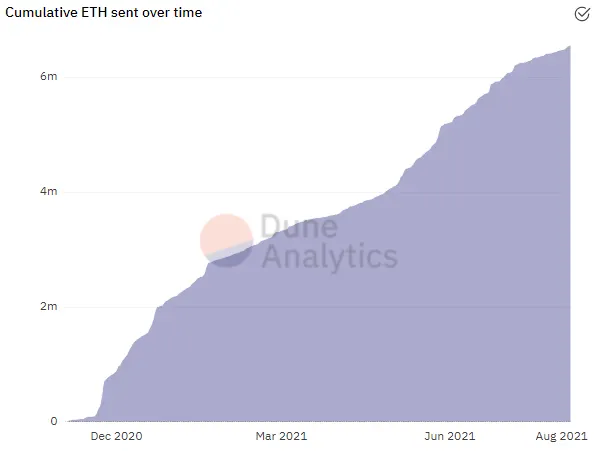Yesterday, Ethereum completed a major upgrade, the London hard fork.
It appears to have gone off without a hitch, implementing EIP-1559, an update that reduces the variability of transaction fees and introduces a burning mechanism to counterbalance Ethereum inflation.
Following the successful rollout, which has seen tens of thousands of dollars worth of ETH burned every minute, Ethereum co-creator Vitalik Buterin is "confident" about the next phase of the network's development: the merge between Ethereum's mainnet and the Ethereum 2.0 beacon chain.
Speaking to Bloomberg, Buterin said that the London upgrade is "proof that the Ethereum ecosystem is able to make significant changes," and that it "definitely makes me more confident about the merge."
What is Ethereum 2.0?
Ethereum 2.0 is the long-awaited upgrade that will see the number two crypto network transition from its current proof of work (PoW) consensus mechanism to a proof of stake (PoS) model. The aim is twofold: to improve the network's scalability and security, and to shift away from the energy-intensive PoW system.
Congrats on the launch all!
— vitalik.eth (@VitalikButerin) December 1, 2020
The Ethereum 2.0 Beacon Chain, the first phase of the transition, went live on December 1 2020 allowing users to begin staking ETH on the network. If users staked 32 ETH, they were also eligible to become active, interest-yielding nodes once Ethereum 2.0 launches.
So far, over 6.5 million ETH, worth around $18 billion, has alredy been staked.

While the beacon chain is currently separate from the Ethereum mainnet, the next step in the transition will see the two merge.
Following the switchover, the next step in the years-long upgrade will introduce shard chains, a scaling mechanism that enables transactions to be handled in parallel chains instead of consecutive ones.
The upgrade promises to enable Ethereum 2.0 to handle 100,000 transactions per second—but, Buterin warned in June 2020, it could be "a couple of years" before the upgrade is fully implemented.





